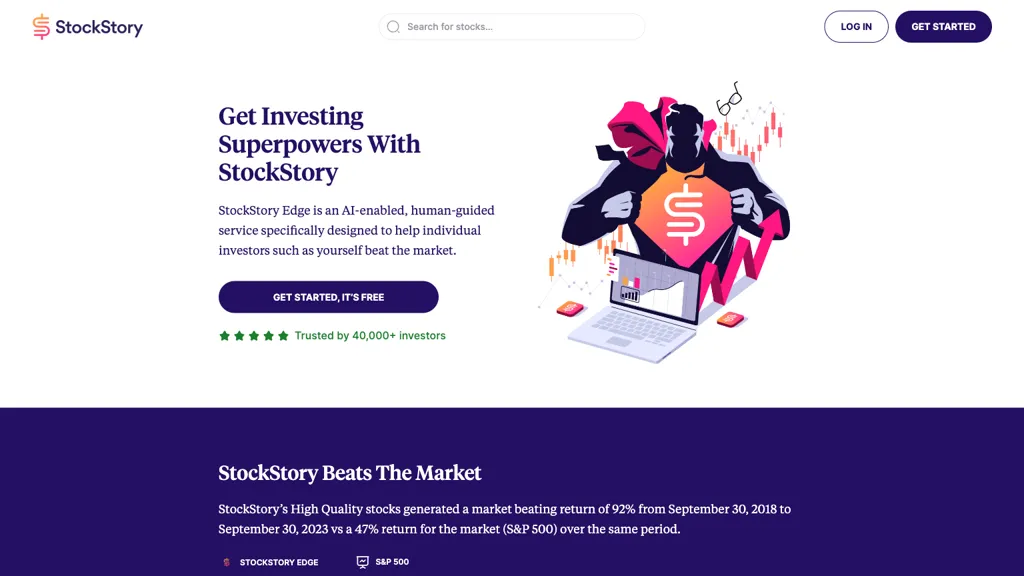20 Great Info To Picking AI Stock Trading Platform Sites
20 Great Info To Picking AI Stock Trading Platform Sites
Blog Article
Top 10 Suggestions For Evaluating Ai And Machine Learning Models Used By Ai Stock Predicting/Analyzing Trading Platforms
Analyzing the AI and machine learning (ML) models employed by stock prediction and trading platforms is crucial to ensure they deliver precise, reliable, and useful insights. Models that are overhyped or poorly constructed could lead to inaccurate predictions and even financial losses. Here are the top 10 guidelines to evaluate the AI/ML models used by these platforms:
1. The model's design and its purpose
It is crucial to determine the goal. Determine whether the model was designed for long-term investing or trading in the short-term.
Algorithm transparence: Check whether the platform reveals the types of algorithms used (e.g. Regression, Decision Trees Neural Networks, Reinforcement Learning).
Customization - Find out whether you are able to modify the model to suit your trading strategy and risk tolerance.
2. Evaluation of Performance Metrics for Models
Accuracy. Find out the model's ability to forecast, but do not rely on it alone since this could be misleading.
Accuracy and recall: Check whether the model is able to discern real positives, e.g. correctly predicted price changes.
Risk-adjusted return: Determine whether the model's forecasts will result in profitable trades after adjusting for risk (e.g. Sharpe ratio, Sortino coefficient).
3. Test your model with backtesting
Performance from the past: Retest the model with historical data to determine how it would have been performing in previous market conditions.
Testing on data other than the sample is crucial to prevent overfitting.
Scenario analyses: Check the model's performance in different markets (e.g. bull markets, bears markets high volatility).
4. Make sure you check for overfitting
Signs of overfitting: Search for models that perform exceptionally good on training data but poorly on unseen data.
Regularization: Find out if the platform is using regularization methods, such as L1/L2 or dropouts to prevent excessive fitting.
Cross-validation (cross-validation) Verify that your platform uses cross-validation to assess the model's generalizability.
5. Review Feature Engineering
Relevant features - Check that the model is using important features such as price, volume or technical indicators. Also, check sentiment data and macroeconomic factors.
Selection of features: Make sure that the system chooses characteristics that have statistical significance and do not include irrelevant or redundant data.
Updates to features that are dynamic: Check whether the model is able to adapt to market changes or to new features as time passes.
6. Evaluate Model Explainability
Interpretability: Ensure that the model has clear explanations of the model's predictions (e.g., SHAP values, importance of features).
Black-box model Beware of applications that employ models that are too complicated (e.g. deep neural network) without describing tools.
User-friendly Insights: Make sure that the platform offers useful information in a format that traders can easily understand and utilize.
7. Review the model Adaptability
Changes in the market - Make sure that the model can be adapted to changing market conditions.
Continuous learning: Determine if the platform continuously updates the model to include new data. This could improve the performance.
Feedback loops. Make sure that your model is incorporating the feedback from users as well as real-world scenarios to improve.
8. Be sure to look for Bias in the elections
Data bias: Ensure that the training data you use is accurate to the market and without biases.
Model bias: Check whether the platform monitors the biases of the model's predictions and reduces the effects of these biases.
Fairness - Ensure that the model you choose to use isn't biased in favor of or against specific sector or stocks.
9. Examine Computational Efficiency
Speed: Check whether a model is able to make predictions in real-time and with a minimum latency.
Scalability: Find out if a platform can handle multiple users and large data sets without affecting performance.
Resource usage: Determine if the model uses computational resources effectively.
Review Transparency & Accountability
Model documentation: Ensure the platform has a detailed description of the model's architecture as well as its training process, as well as the limitations.
Third-party auditors: Check to see if a model has undergone an audit by an independent party or has been validated by a third-party.
Error Handling: Determine if the platform has mechanisms to detect and correct errors in models or failures.
Bonus Tips
User reviews and Case Studies: Review user feedback, and case studies to evaluate the actual performance.
Trial period: Try an unpaid trial or demo to evaluate the model's predictions as well as its useability.
Customer support - Make sure that the platform has the capacity to provide a robust support service to solve the model or technical problems.
With these suggestions by following these tips, you will be able to evaluate the AI and ML models used by stocks prediction platforms, making sure they are accurate and transparent. They should also be aligned to your goals in trading. Follow the most popular here for ai for stock trading for blog examples including chatgpt copyright, trading ai, ai investment app, ai stock trading, ai investment app, ai trading tools, ai trading, investment ai, ai for stock trading, ai for investing and more.
Top 10 Tips For Assessing The Quality And Reliability Of Stock Trading Platforms Based On Ai
Assessing the scalability of AI-driven trading and stock prediction platforms is vital to ensure they can cope with increasing volume of data, demands from users and market complexity. Here are 10 best suggestions for evaluating the scaling.
1. Evaluate Data Handling Capacity
Find out if your platform can analyze and process large datasets.
Why? Scalable platforms have to handle increasing data volumes without compromising performance.
2. Test Real-Time Processor Capabilities
Try the platform out to see how it handles streams of data in real time for example, breaking news or stock price updates.
Why: Analyzing in real-time is crucial for trading decisions, and delay can result in missing opportunities.
3. Cloud Infrastructure and Elasticity
Tip: Check if the platform can dynamically scale resources, and if it uses cloud infrastructure (e.g. AWS Cloud, Google Cloud, Azure).
Cloud platforms provide flexibility. The system is able to scale up or down in accordance with the need.
4. Algorithm Efficiency
Tips: Find out the effectiveness of AI models that are used to make predictions (e.g. Deep Learning and Reinforcement Learning).
Reason: Complex algorithmic structures are resource-intensive. Making them more efficient is the key to scaling.
5. Study distributed computing and parallel processing
Tip: Determine if a platform makes use of parallel processing and distributed computing frameworks.
What is the reason? They can speed up data processing across many nodes.
Review API Integration, and Interoperability
Test the platform’s ability to connect external APIs.
Why? Seamless integration allows the platform to adapt to the changing environment of trading and data sources.
7. Analyze User Load Handling
Try simulating traffic volumes that are high to see how your platform will perform.
The reason: Performance of a platform that is scalable is not affected by the increase in users.
8. Assessment of Model Retraining and the Adaptability
Tip: Determine how often and efficiently the AI models have been re-trained with new data.
The reason is that markets change constantly, it is important to update models regularly.
9. Verify fault tolerance and redundancy
Tips: Ensure that your platform is equipped with failover mechanisms to deal with software or hardware malfunctions.
Why? Downtime in trading can be costly, so fault tolerance is crucial for the scalability.
10. Monitor Cost Efficiency
Review the costs associated with your platform, including the cloud resources, storage and computation power.
The reason: Scalability should not be at the expense of unsustainable costs. Therefore, it is crucial to strike a balance between performance and cost.
Bonus tip: Future-proofing
Check that the platform can be able to adapt to changes in regulation and incorporates the latest technologies, like quantum computing or advanced NLP.
If you focus your attention on these factors it is possible to accurately evaluate the capacity of AI prediction and trading platforms. This ensures that they are durable and efficient and prepared for expansion. Take a look at the best trading ai tool info for more recommendations including trading ai tool, ai options, can ai predict stock market, free ai tool for stock market india, ai stock predictions, how to use ai for copyright trading, trading ai tool, best ai stock prediction, ai share trading, ai stock predictions and more.